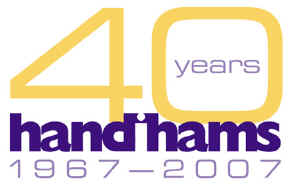 In this issue you will find:
In this issue you will find:
- 2 m repeaters -- too many of them is not a good thing
- Avery thinks about Summer ham radio activities
- Helmet cam returns
- Eat like a radio camper
- Assistive tech survey
- Mobile phone screenreader
- Text band plan and frequency chart updated
- Radio camp applications in the mail
- Elmer tells a funny
- In RekkyTec: Links
2 m operation continued
 Picture: This cartoon octopus is answering phones and running a computer. People are doing so many different things these days that getting on a 2 m repeater must compete with many other activities!
Picture: This cartoon octopus is answering phones and running a computer. People are doing so many different things these days that getting on a 2 m repeater must compete with many other activities!
Last week, I talked to little bit about the disappointing lack of activity on 2 m repeaters. That apparently struck a nerve, because I heard from others who have had pretty much the same experience. Here is what WR1X wrote:
My wife, granddaughter and I just returned from a 300 mile trip to Quebec. I pre-programmed the Kenwood TMV7A with all the possible repeaters from north central MA, where I did not talk so nobody would know the house was vacant for several days, the southwest portion of NH, the entire length of VT into Quebec and then another 100 miles north to Drummondville. I gave my call and said I was listening on the repeater and many of these repeaters are on tops of mountains and have good coverage. Not one reply. In Quebec I stated the same in both English and French and nothing. It was a very disappointing trip as far as Ham radio was concerned and 146.52, .55 and .58 are always the first 3 channels in all my VHF radios and on UHF I have 446.000 and then the next two channels are up and down by 25 kilohertz. Most of the repeaters were working well as the courtesy tone or squelch tail could be heard.
I placed the radio into scan mode for all my memories and not much was heard over the 5 days. Thank goodness for talking books!
73,
Have a great day,
Paul Bolduc
WR1X
Thanks to Paul for sharing with us. What are we to make of this lack of activity? I think there are several things that are contributing to "radio silence", not only in the United States, but -- as we see -- in other countries as well.
The first group of things that might keep people off the air are things that we really have no control over. The rise of cellular phones as a way to stay in touch with family and friends, the need for most people to be in the workplace away from amateur radio during large parts of the day, and the galaxy of competing activities that make amateur radio only one choice of many audiovisual/multimedia choices throughout their busy days. Many of us are so bombarded with audio and video that it is a relief to simply hear silence for a while. These are long-term trends that show no signs of abating, and they affect other activities as well as amateur radio. So let us assume that they are a "given".
The second group of things that might keep people off the air are things that we have control of in the amateur radio community. Simply getting into the habit of carrying an HT and listening to a favorite frequency can go a long way to building activity on your local repeater. If you don't listen, you can't participate! Since there are plenty of small, easy to carry radios available now, taking a radio along during your exercise time walk in the park or setting it on the workbench while you clean the garage is really easier than ever. Radio clubs should consider scheduled on the air repeater activities. Not only do these activities give club members a reason to get on the air, but they also help to keep us familiar with the operation of our equipment. These kinds of scheduled net activities may be heard on the local repeater by mobile stations passing through. Net control stations should invite mobile stations to check in. There is no reason amateur radio operators who are retired or who work odd hours cannot have local, scheduled on the air repeater activity during the daytime.
In the past, I've talked about the problem of "dilution". What it means is that when there are 1, 2 or just a few of something it is easy to focus on those few things. A good example is what happened to the traditional TV networks when on the air television began to be replaced by cable TV. When there were only three networks, there was little choice and viewership for all of them was high. Now, with hundreds of channels to choose from, traditional networks have lost viewers as overall viewership has been "diluted" by the addition of so many specialty channels.
Do you know what? I think the same thing has happened with amateur radio repeaters. At first, there were only a few of them and activity on these few repeaters was relatively robust. In 2007, the situation is very different. Here in the Twin Cities metropolitan area, the largest concentration of people in Minnesota, there are virtually no 2 m repeater pairs that are currently not accounted for. With so many repeaters, actual on the air activity is spread out so thin that the end result is lots of dead air time. Frankly, this is one case where having "more" does not always mean "better". Of course some of these repeaters have specialty purposes, and there is not anything necessarily wrong with that. However, all too many of them are simply being placed on the air because the repeater owner enjoys the technical challenge of putting the repeater together and keeping it on the air. The end result is much like what has happened to television networks when cable TV came along with hundreds of channels. The pool of possible users is now spread out over so many repeaters that activity on individual machines must necessarily be lower than it would be otherwise. I'm not sure what the solution is to this one. One thing for certain is that it is more of a social challenge than an engineering challenge to keep the club repeater active for more than a few minutes a day.
What needs to happen is that your club's repeater needs to be a "stand out" from all the rest. As I said, scheduled club activities can keep the repeater active as well as reminders in the club newsletter encouraging members to carry their portable radios and to welcome newcomers onto the air. These are the things that we have control over and can change. We are not going to change the march of competing technologies and the growth of competing activities. It is up to us to make amateur radio an attractive option so that more people will choose to participate!
Patrick Tice, WA0TDA
patt@courage.org
wa0tda@arrl.net
Handiham Manager